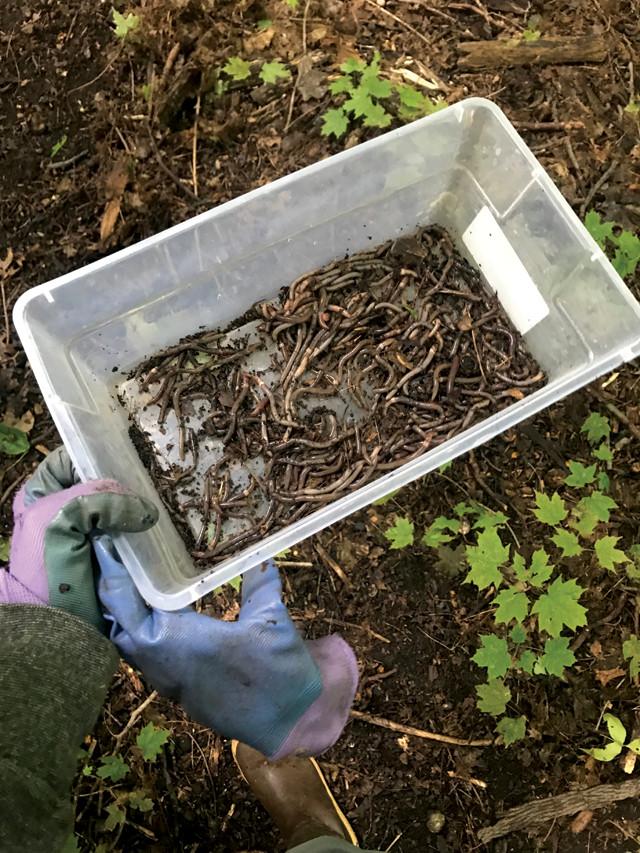
by Mary Caperton Morton Wednesday, February 13, 2019

Asian jumping worms, which can decrease the availability of nutrients in soils for microbes, plants and fungi, have been on the rise in Wisconsin and other states. Credit: Geological Society of America.
To tell the difference between a regular earthworm and an Asian jumping worm, pick it up. An earthworm will likely just lay there, perhaps curling gently around a finger, but a jumping worm will thrash around violently until it jumps out of your grasp. Researchers are looking at how this invasive species is altering soil in Wisconsin, where the worms have been found in growing numbers since 2013.
Asian jumping worms first arrived in North America in the late 19th century, probably as stowaways in exotic plant soils. Since their introduction, the worms have wriggled across the Northeast, Southeast and Midwest U.S. Also known as crazy worms and snake worms, jumping worms look like regular earthworms, but their behavior, including how they process soil, is different. “The way that these worms change the soil is something new,” said Janelle Wempner, an undergraduate researcher at the University of Wisconsin-Madison, in a statement. “They leave little balls of soil. Imagine a soil surface covered with coffee grounds.”
Interested in how these aggregates affect soil health, Wempner and her colleagues used a scanning electron microscope to examine the mineral contents of jumping worm-affected soils collected from laboratory habitats. Their findings so far indicate that jumping worm aggregates tend to bind metals like iron and aluminum, and nutrients like potassium and calcium, making these elements less available to microbes, plants and fungi. “These soil aggregates lock up nutrients and chemically alter the soil composition,” said Wempner, who presented the work at the Geological Society of America annual meeting in Indianapolis last November. Previous studies have shown that plants and fungi have difficulties growing in soils affected by jumping worms due to nutrient shortages and the poor soil structure created by the aggregates.
Jumping worms also differ from earthworms in that they can reproduce asexually, with adults producing hundreds of hardened egg capsules that are extremely resistant to cold and drought. Wempner and her colleagues examined these cocoons and found that the outer layer is selectively permeable to certain chemicals, a finding that may help scientists develop a treatment to control the growing population of the invasive worm.
© 2008-2021. All rights reserved. Any copying, redistribution or retransmission of any of the contents of this service without the expressed written permission of the American Geosciences Institute is expressly prohibited. Click here for all copyright requests.